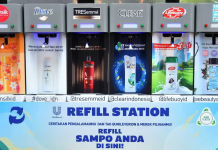Nestlé is continuing to provide more nutritious choices for children with its new Nesquik All Natural Porridge. The new Nesquik All Natural Porridge is made with 100% natural ingredients and is a source of fiber with at least 70% oats, a mix of oat flakes and oat bran. It also contains wheat and cocoa, with no artificial flavors, says press statement.
According to the company, today, children in Europe still fall below recommendations on dietary fiber intake. With parents looking for nutritious and more natural options for their family, Nesquik All Natural Porridge meets the renewed trend towards oats as source of fiber at breakfast time.
The new porridge claims to offer the classic Nesquik taste children know and love. The range includes a classic version with cocoa, as well as cocoa and banana and cocoa and apple varieties with the inclusion of real fruit pieces. The natural taste is said to come from the combination of cereals, cocoa and fruit.
The porridge claims to contain less than 5g of total sugars in a serving (12.3g in 100g) and meets World Health Organization European Union nutrition criteria. When it is consumed with milk, a serving contains an additional 6g of sugars from the lactose naturally present in milk.
First launched in Germany in July, the porridge will be available in further European markets soon, including Portugal and Poland.
Last year, Nestlé presented Nestlé for healthier kids, a global initiative to help 50 million children live healthier lives by 2030. It includes a commitment to accelerate the transformation of Nestlé’s food and beverage portfolio worldwide, adding even more fruits, vegetables, fiber-rich grains and micronutrients, as well as continuing to reduce sugars, salt, and saturated fats. In 2018 alone, the company launched more than 1300 new products to meet the nutritional needs of children.











